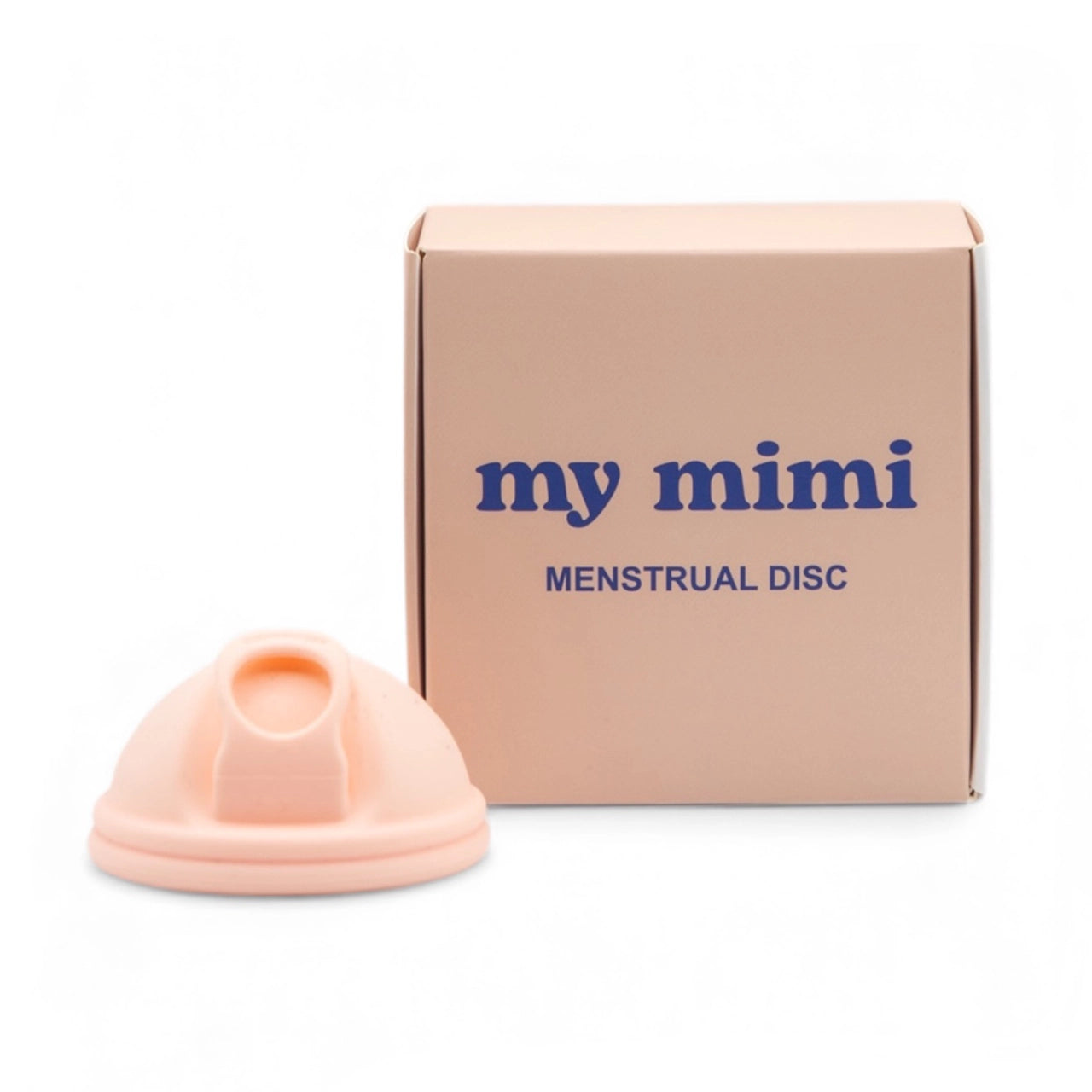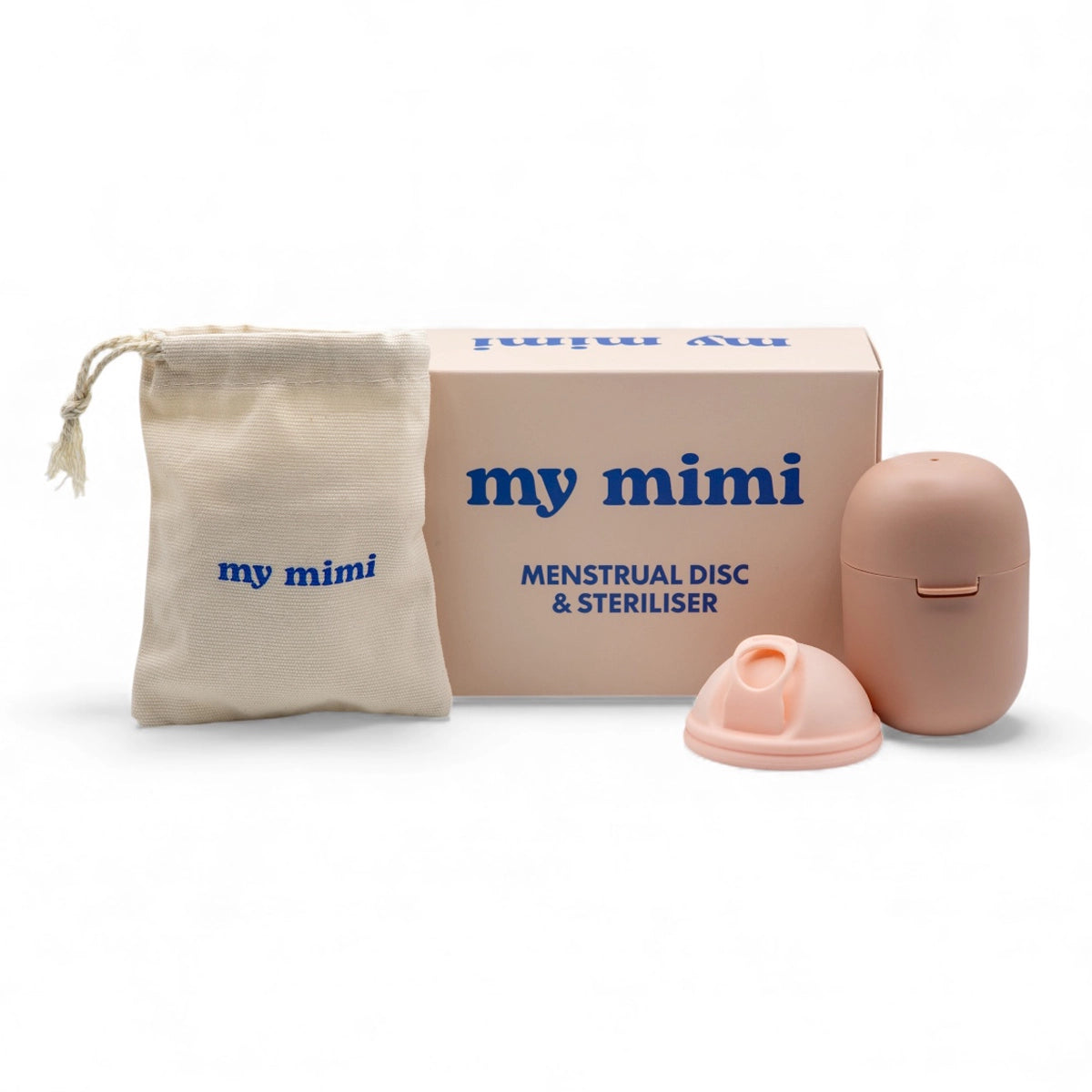can a menstrual disc cause cramps?
Date Created: 20th of July 2025
Read Time: 5 minutes
Understanding menstrual disc comfort, positioning, and cramping
Reusable menstrual discs have quickly become a preferred period care choice for many Australians. But a common concern that sometimes surfaces is whether a menstrual disc can cause cramps.
Let’s unpack the facts behind disc-related cramping, and explore what’s normal, what’s not, and how my mimi, Australia’s award-winning menstrual disc brand, is designed to support comfort, not compromise it.
What causes period cramps?
Before blaming the disc, it helps to understand what causes cramping in the first place.
Menstrual cramps, or dysmenorrhoea, are typically caused by the uterus contracting to shed its lining. These natural muscle contractions can range from mild to intense and vary from cycle to cycle. For some, they start before bleeding even begins.
Many people using period products - from tampons to discs and cups – might mistakenly associate these cramps with the product itself.
Can a menstrual disc cause cramps?
The short answer: it’s unlikely, but not impossible.
If inserted correctly, a menstrual disc should rest comfortably in the vaginal fornix, tucked behind the pubic bone. It shouldn’t put pressure on sensitive areas like the cervix or vaginal wall.
Mild discomfort or cramping can occur in situations such as:
- Incorrect insertion or placement
- Using the wrong size for your anatomy
- Sensitivity during ovulation or heavy flow days
- Pelvic floor tension or muscular response
Reusable menstrual discs like my mimi are designed with flexibility in mind – but every body is different. A disc that sits too high or presses against the cervix might trigger a cramping sensation for some people.
How to minimise menstrual disc discomfort
-
Revisit your insertion technique
Angle the disc downward toward your tailbone and ensure it tucks behind your pubic bone. You shouldn't feel it once it's in place. -
Try a different size
my mimi comes in two sizes:- Small: 61mm diameter, 35.2mm tall, 32ml capacity - ideal for those under 30 or who haven’t given birth vaginally.
- Large: 68mm diameter, 39.2mm tall, 61ml capacity - designed for those over 30 or who have given birth vaginally.
-
Use a disc with gentle features
my mimi includes a flexible rim and a loop tab for easy removal - which means less pressure, less mess, and more control. -
Listen to your body
If cramping continues, try removing the disc to see if it helps. This can indicate whether the sensation is product-related or part of your usual cycle.
Cramps vs. Pressure: What’s the difference?
Sometimes what feels like cramping is actually pressure. This can happen if the disc is pressing against your bladder or rectum, especially if it’s inserted too high or is too firm.
A disc that doesn’t suit your anatomy may push on internal structures. The result? Pressure that mimics cramping.
A different angle or a disc with a softer shape could make a big difference.
What if I have an IUD or sensitive cervix?
Great question. Not all discs are the same.
my mimi is often recommended for IUD users because it’s made from soft medical-grade silicone and designed to sit away from the cervix. If you’ve been told you have a low cervix or a tilted uterus, speak with a health professional to choose the right disc.
Why my mimi stands out
Comfort is non-negotiable.
That’s why my mimi was awarded “Best Sustainable Period Care Solution in Australia 2025”. Each disc is:
- Made from medical-grade silicone
- Available in two sizes to suit your body
- Fitted with a soft loop tab for easy removal
- Safe to use with IUDs
- Cost-effective at just 83 cents per month over 5 years
my mimi is trusted by thousands of Australians and ships fast across Australia and New Zealand.
Final thoughts
Menstrual discs don’t usually cause cramps. But if you’re feeling discomfort, check your insertion, try a different size, and always listen to your body.
And if you’re unsure, speak with your healthcare provider. Period care should feel empowering - not painful.
Health Note
This article is general in nature and does not replace professional medical advice. Please consult your doctor or healthcare provider for individual guidance.












